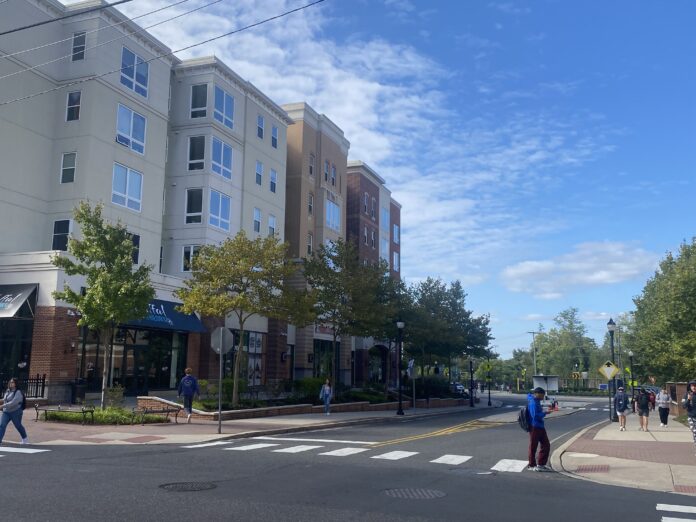Ever since I was little, I have loved clothes. I would study fashion magazines, what people around me were wearing, and design my own clothes. I would obsess over what to wear to the grocery store, jumping at any chance to put an outfit together. As I got older, I would lay out my outfits the night before school. The sheer excitement of waking up and getting dressed was comparable to that of Christmas Eve.
In elementary school, my “fashion” sense consisted of quirky graphic t-shirts from Five Below and the same gray Converse. Every. Single. Day. To me, those hallways were like a New York Fashion Week runway.
When I got to middle school and high school, the pressures of being around new kids in a new school, awareness of trends, and the horrors of puberty, made me hyper-aware of what I looked like to other people. I found solace in my outfits. I was dressing like the best version of myself every morning, telling a story with my clothes. For me, that meant experimenting with preppy styles, like knit sweaters, plaid skirts, and chunky brown boots. For others, it was Hollister jeans and pushing the limits of how cropped was too cropped. It was my suit of armor, protecting me from the turmoil of middle and high school.
At first, it looked like the kids around me were feeling the same pressures I was; they were dressing their best, in whatever way that looked like for them. It looked like girls would spend a little extra time on their hair in the morning, or swipe on a layer of mascara. Boys would wear their cleanest and crispest sneakers and jeans instead of their raggedy gym shorts. It felt like we all had this quiet understanding, silently trying to impress one another while we were still strangers.
After the first few weeks, when we fell into our routines and got past the icebreakers and the initial awkwardness of it all, I noticed a shift. A shift in the way people dressed. The feeling in the air was different. We were no longer strangers, but friends and peers and classmates. Our masks had started to slip, revealing pieces of who we really were outside of the hallways. You didn’t have to look your best every day, and no one really cared if you did. The cozy sweatpants, messy buns, and everyday clothes had made an appearance. The comfort of seeing the same faces every day melted away the necessity to impress.
That being said, there were still the confines of dress codes and possibly not having your own money to buy clothes that you really liked yet. In high school, shoulders, legs, and midriffs were policed. Teachers and administrators made it their job to point out every tank top strap that was not the width of three fingers, and every pair of shorts that did not meet your fingertips. Aside from some of the more unsettling aspects of dress codes, students could be dress-coded for wearing pajamas to class or any graphic tee that was deemed inappropriate.
One of the beautiful things about college is that no one can tell you what to put on your own body.
Now in college, I still notice these patterns in the way students dress. However, something feels different about it now. There’s a sense of community seeing your classmates’ first-day outfits, the difference in trends from the fall semester to the spring, and getting a true sense of not just a person’s style, but their identity. For some, it’s blue bell-bottom jeans and flowy shirts, for a hippie, carefree look. For others it’s fresh athleisure, walking the line between cute and comfy, but siding on cute. No dress codes and no parental influence. A certain energy fills the air, the excitement of a new semester and a fresh start. Not just for your academics, but for yourself.
So, you put on your best outfits for the first week. Then, similarly to high school, the newness wears off, the work starts pouring in, and the late nights become more and more frequent. Sweatpants and dark circles make a nasty comeback. Yet even on your worst day, with dirty hair and a hoodie you slept in, you look around and realize your classmates don’t look too far off from you, in whatever lazy means to them.
There is something comforting about it. A hint that you aren’t alone in the chaos of college. We’re all cramming for exams and trying to meet the word count on papers. All while learning how to feed ourselves, live on our own, and still have a social life.
In college, the suits of armor fall and the masks come down because you’re too tired to try and fight it. You’re exhausted and in need of a home-cooked meal and a bed that doesn’t make you wonder if prisoners have it better. There is lamenting over assignments, homework, and the pressures of it all.
So you wear pajamas to class. Others may not know, but you rolled out of bed and could not possibly fathom a reality where you put jeans on your body.
We’ve all been there. Walking into class, the stress in the air is palpable, a living, breathing thing that has consumed you and your peers. You look around at students sitting at their desks. Sweatpants. Sweatshirts. Slippers. Messy hair. You look down at your own clothes and something eases in your chest. You are not alone. You are the farthest thing from it. Maybe you don’t know anyone else’s name in the room other than your own and the professors, but suddenly the people around you feel as close to you as your childhood best friend. They know you. They feel you. They understand you.
Does anyone really care, or notice, what you wear to class? Who’s to say? But if you take a closer look, you may notice a community and familiarity that you never experienced before.
For comments/questions about this story DM us on Instagram @thewhitatrowan or email thewhit.opinioneditor@gmail.com.






